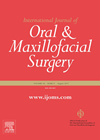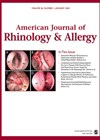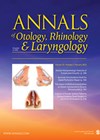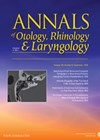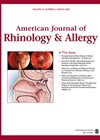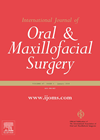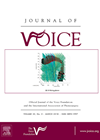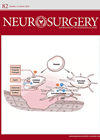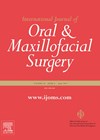
Journal Reviews
CT parameters in orbital wall fractures, choice of treatment, and patient outcome
This review from the Netherlands attempts to evaluate the relationship between CT parameters and the treatment that is used in clinical outcome (enophthalmos, diplopia and/or limitation in ocular movement). The authors look at fracture size, fracture location and involvement of...
Effects on the nasal cavity and maxillary sinus after a Le Fort I osteotomy
This paper from Turkey divided 28 patients into three groups: those having a maxillary advancement osteotomy, those with a maxillary advancement and impaction, and those that underwent advancement with a yaw rotation. They found that pure advancement movement of the...
Not as rare as we think? Silent sinus syndrome incidence on CT heads
It is relatively uncommon to come across a case of silent sinus syndrome (SSS), but not as rare as the prevalence in the literature might suggest – the authors of this study note that only 100 cases are reported in...
Are quinsies worth draining?
Recent data is providing accumulating evidence that treatment failure in the management of peritonsillar abscesses (PTAs, aka ‘quinsies’) is similar when these are managed with medical treatment (MT) alone versus MT plus surgical drainage (M+ST). However, in the absence of...
Otosclerosis - to scan or not to scan?
In an era of insidiously reducing thresholds for investigating patients, Maxwell and colleagues pose an important question: is high-resolution computed tomography (HRCT) prior to stapes surgery for otosclerosis worthwhile? Their practice typically considers HRCT for cases of suspected otosclerosis presenting...
How to manage the concha bullosa in FESS
It is an interesting concept to assess how much impact the presence of a large concha bullosa (CB) has on both severity of chronic rhinosinusitis (CRS) and also postoperative outcomes after FESS. The authors accept that the paper has limitations...
A classification of a new cell - the retrosphenoid cell
This is a concise paper which describes a previously undefined type of cell within the sphenoethmoidal complex. It identifies the retrosphenoid cell, differentiated from an Onodi cell by being entirely within the posterior wall of the sphenoid sinus, lying between...
Bone thickness and split pattern in mandibular osteotomies
This paper looked at 63 sagittal split ramus osteotomy sites. The type of split was classified according to the Plooij paper and bone measurements were taken at four sites. Of these sites, the thickness of the bone in one point,...
Is bone scanning still of value?
This is an article from Australia of 109 patients, 83 of which had CT, 72 MRI and the presence of bone invasion on imaging was compared with the histopathology. Bone invasion was present in 44 of 109 resection specimens. Bone...
Beware the skinny patient…
The adverse health impacts of an excessive BMI are well known. This study highlights one laryngeal pathology for which a low BMI appears to be a significant risk factor. The records of 28 patients treated for arytenoid cartilage dislocation were...
Skull base imaging: a review
This excellent review paper describes the anatomy, imaging protocols and differentiating imaging findings on CT and MRI in myriad skull base lesions. Skull base protocol MRI and thin section CT are required to evaluate all skull base lesions. According to...
First signs of late nodal metastases
This is a retrospective review of 65 patients who had late metastases during follow-up after initial curative treatment. They analyse the detection methods of palpation, ultrasound, CT and subjective symptoms. Palpation detected the nodes in 31 patients, ultrasound in 17,...

